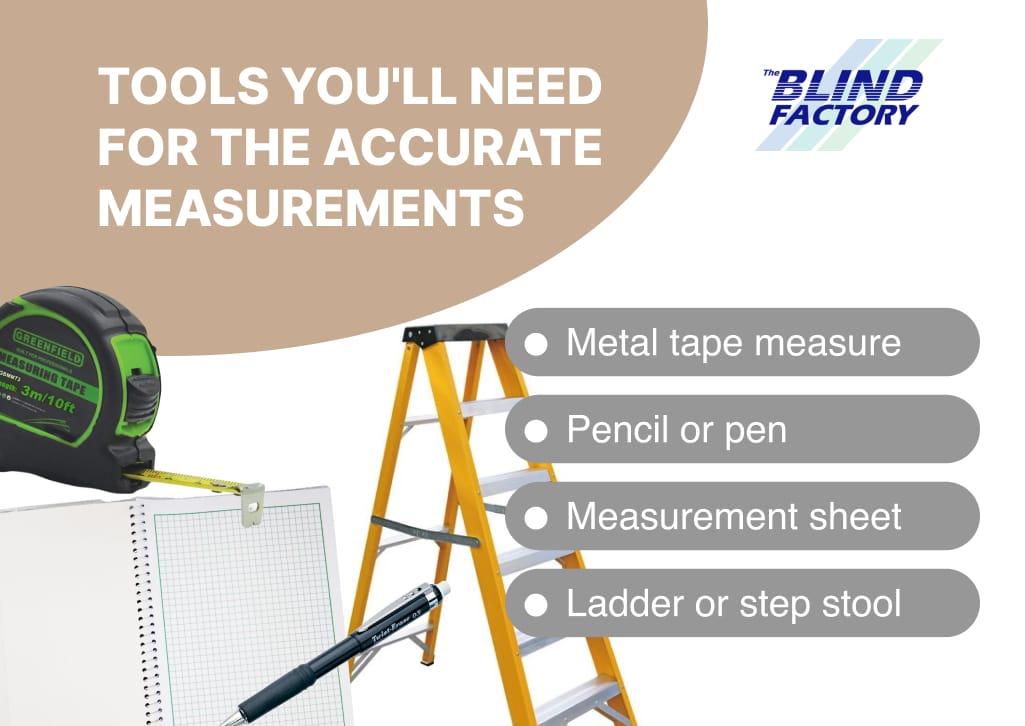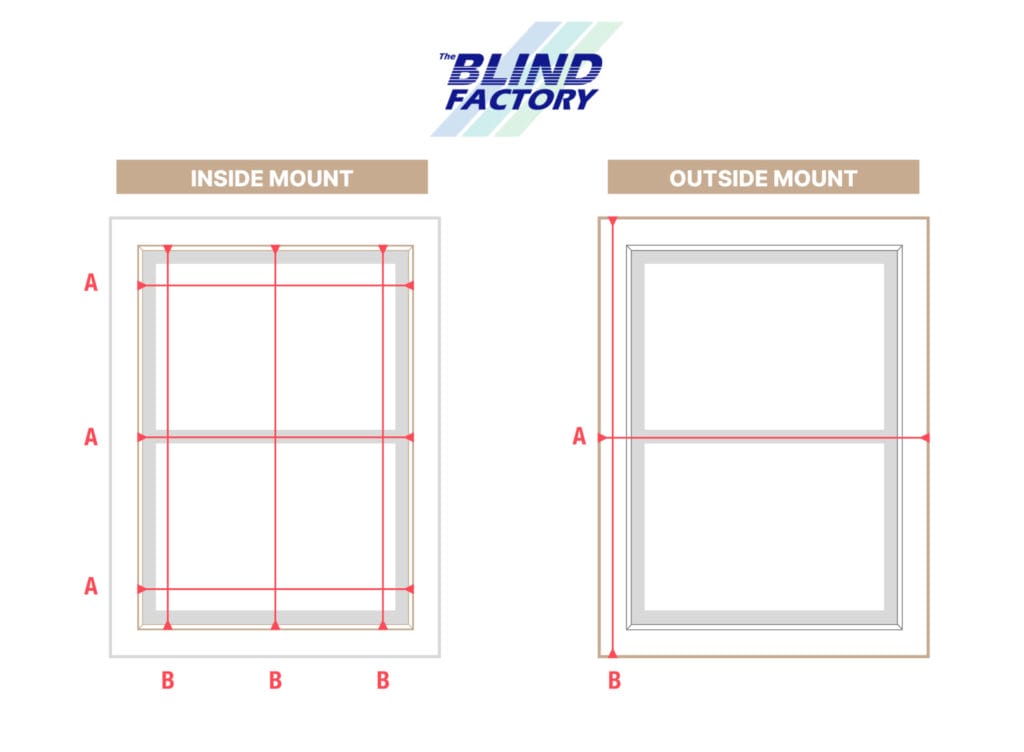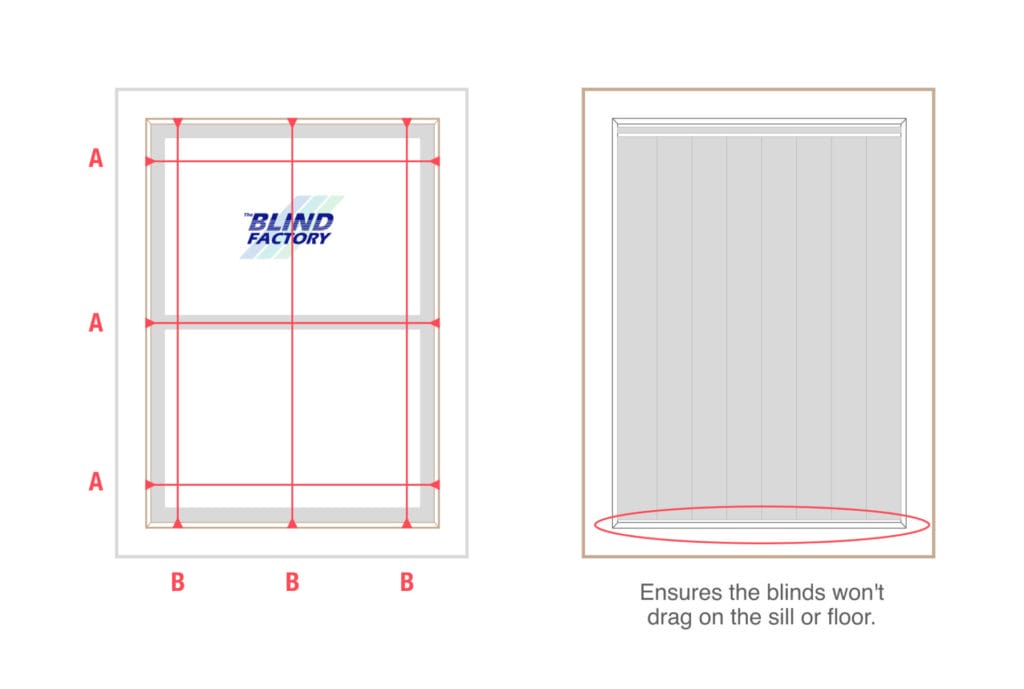When vertical blinds are measured correctly, they fit well, operate smoothly, and complete the look of a room. When they’re not, the results can be frustrating—gaps in coverage, poor function, and a finish that looks off-balance.
This guide shows you how to measure for vertical blinds accurately. Whether you’re planning an inside or outside mount, these steps will help make sure you get a clean fit the first time.
Why Getting the Fit Right Matters
A proper fit isn’t just about appearance. It affects privacy, function, and even how long the blinds last.
Blinds that are too narrow may leave gaps where sunlight and outside views slip in. Ones that are too long can drag along the floor or window ledge and wear out faster. Poor measurements can also cause the headrail to catch or rub if it’s squeezed into a frame that’s too tight.
Taking the time to measure carefully helps you avoid these problems. Done right, the blinds will move smoothly, hang evenly, and blend into the window without calling attention to themselves.
Start with the Basics: What You’ll Need

Before you begin, collect a few simple tools:
- A metal tape measure: for the most accurate results
- A pencil or pen: to write your numbers as you go
- A notepad or printed measurement sheet: so you don’t lose track
- A ladder or step stool: in case the window is high or wide
Measuring vertical blinds doesn’t require any special equipment beyond that. What matters most is that you’re thorough and methodical.
First Decision: Inside Mount or Outside Mount?
Before you grab the tape measure, decide where the blinds will be installed. This matters more than you might think.

Inside Mount
Inside-mounted vertical blinds sit inside the window’s frame. This style creates a streamlined, built-in look. It’s a good option if your window opening is deep enough to hold the headrail and allow the blinds to move freely.
However, not all windows are deep enough, and inside mounts can bring more attention to uneven frames or poorly finished edges.
Outside Mount
Outside-mounted blinds are installed on the wall above the window or directly on the trim. This style can make a window appear larger and is the better choice if the frame is shallow or has obstructions like handles or locks.
It’s also more forgiving since the blinds fully cover the opening and can block out more side light.
Once you’ve chosen your mount style, you’re ready to measure.
Related Article: How to Measure for Mini Blinds
Measuring for Inside Mount Vertical Blinds

Once you’ve confirmed that your window has enough depth for an inside mount (typically at least 2–3 inches), follow these steps:
1. Measure the Width
Use your steel tape to measure the inside width of the window at three points: the top, middle, and bottom.
Write down all three, but keep the smallest one. That’s the number that matters, because it ensures the blind will hang and move without sticking.
2. Measure the Height
Now, measure the height of the window opening at three spots: left side, center, and right side.
Again, record the shortest of the three, especially if you’re mounting the blinds all the way down to a windowsill or floor. This step helps prevent dragging or uneven finishes.
3. Check the Depth

If you’re mounting inside the frame, you need to ensure enough depth for the headrail to fit properly.
Measure from the front of the window frame to the glass or back edge. If it’s less than the minimum depth required by your blind model, you may need to switch to an outside mount.
Measuring for Outside Mount Vertical Blinds
For outside mounts, the blinds will hang over the entire window (and then some). That means your measurements should be wider and longer than the window opening itself.
Here’s how to approach it:
1. Measure the Width
Start by measuring the total width of the window opening.
Then, add 4 to 6 inches—typically 2 to 3 inches on each side—to allow the blind to cover the window fully and block out peripheral light.
This wider coverage also gives the vanes room to stack neatly on the side when pulled open.
2. Measure the Height
Decide how high above the window you want the blinds to start. Many people choose to mount them 3 to 4 inches above the window frame for better coverage and a taller appearance.
Then, measure from that point down to your desired endpoint: the window sill, a few inches below, or the floor.
If the blinds will reach the floor, aim to stop about half an inch above it to prevent brushing or dragging.
Be especially mindful if the sill juts out more than 2 inches, as it may interfere with the blind’s swing or weight distribution. In those cases, you might adjust your drop height or mounting position.
Account for Any Obstructions
Once you’ve measured, take a moment to review the area around the window. Look for anything that might obstruct the blinds or interfere with smooth operation.
Common obstructions include:
- Window handles or cranks
- Heater registers or radiators below the sill
- Trim, crown molding, or deep sills
- Furniture placed directly in front of the window
In many cases, choosing an outside mount or adjusting your blind length can solve these issues.
Double-Check Your Measurements
It’s easy to misread a tape measure or jot down the wrong number. Before you move on, go back and measure again—one more time for width, one more time for height. Make sure your notes are accurate, clearly labeled, and not rounded up or down.
Most custom blind providers make exactly what you order, not what you meant.
Take Your Time, and Measure Once—Then Again
Learning how to measure for vertical blinds is straightforward, but it pays to slow down and get it right. Whether you’re mounting inside or outside the frame, the time you spend upfront makes a difference in how your blinds perform and how they look in the room.
If you’re ever unsure about a measurement—or whether inside or outside mount is best for your space—it doesn’t hurt to reach out to a professional for a second opinion.
Get Extra Help If You Need It
At The Blind Factory, we provide support for measuring and ordering custom vertical blinds across homes in Columbus and Hilliard. If the process still feels unclear or you’d like someone to review your measurements, we’re here to help you get it right the first time.

